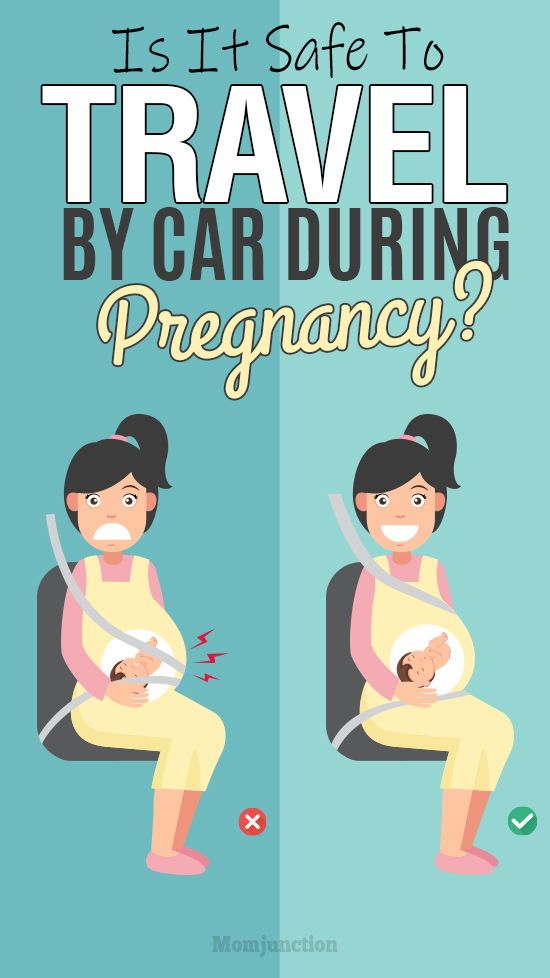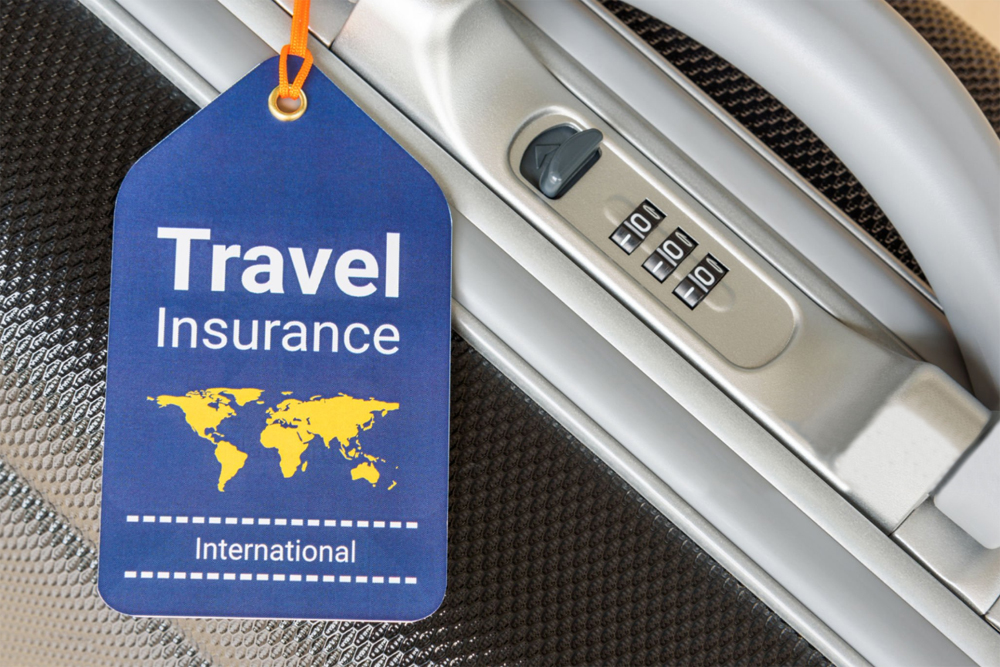Yes, it is generally safe to travel by car during pregnancy if there are no complications. Frequent breaks are recommended to ensure comfort and safety.
Traveling by car during pregnancy can be a convenient and comfortable option for many expectant mothers. Most healthcare providers consider it safe to drive or ride as long as there are no complications such as preeclampsia or preterm labor. Taking regular breaks every hour or two to stretch your legs and walk around can help prevent swelling and improve circulation.
Wearing a seatbelt correctly, with the lap belt below your belly and the shoulder belt between your breasts, is essential for safety. Always consult your healthcare provider for personalized advice and to ensure you are taking all necessary precautions for a safe journey.
The Fundamentals Of Traveling By Car During Pregnancy
Traveling by car during pregnancy can be safe and comfortable with proper planning. Expectant mothers should consider several factors to ensure both their safety and their baby’s well-being. Below, we explore the key aspects of car travel during pregnancy.
Assessing The Risks
Before embarking on a car trip, it’s vital to assess potential risks. Pregnant women should consult their healthcare provider to discuss any specific concerns or conditions. Key risks to consider include:
- Pre-existing medical conditions
- High-risk pregnancies
- Previous complications
- Long travel durations
It’s also essential to wear a seatbelt correctly. Place the lap belt under the belly and across the hips. The shoulder belt should rest between the breasts and to the side of the belly.
Optimal Times For Travel
The best time for pregnant women to travel by car is during the second trimester. This period, between weeks 14 and 28, is often the most comfortable and stable.
During the first trimester, nausea and fatigue can be overwhelming. Longer trips may be more challenging. The third trimester can bring increased discomfort and the risk of preterm labor. Shorter trips and frequent breaks are advisable.
Here’s a brief guide on the best times to travel:
| Trimester | Travel Considerations |
|---|---|
| First Trimester (Weeks 1-13) | Consider nausea and fatigue, avoid long trips. |
| Second Trimester (Weeks 14-28) | Optimal travel time, fewer symptoms, more energy. |
| Third Trimester (Weeks 29-40) | Increased discomfort, risk of preterm labor, take short trips. |
Remember to take frequent breaks to stretch and move around. This helps in reducing the risk of blood clots and improving overall comfort.

Credit: www.whattoexpect.com
Health Considerations For Pregnant Travelers
Traveling during pregnancy requires special attention to health and safety. Pregnant travelers must consider various health aspects before embarking on a car journey. Ensuring both mother and baby’s well-being is crucial.
Pre-existing Pregnancy Complications
Women with pre-existing pregnancy complications need extra precautions. Conditions like gestational diabetes, preeclampsia, or a history of preterm labor may require medical clearance.
- Consult your healthcare provider before traveling.
- Carry necessary medical records and medications.
- Be aware of nearby medical facilities.
Regular check-ups can help monitor your condition. Always follow your doctor’s advice for a safe trip.
Staying Hydrated And Nourished
Maintaining hydration and nourishment is vital during pregnancy. Dehydration can lead to complications such as preterm labor and urinary tract infections.
| Essential Tips | Details |
|---|---|
| Drink Water | Carry a reusable water bottle. Drink at least 8-10 cups daily. |
| Healthy Snacks | Pack fruits, nuts, and whole grains. Avoid junk food. |
| Regular Meals | Don’t skip meals. Eat small, frequent meals to maintain energy. |
Staying hydrated and nourished keeps both mother and baby healthy. Plan your meals and snacks before starting your trip.
Planning Your Route And Schedule
Traveling by car during pregnancy can be safe and enjoyable. Proper planning is crucial. Ensure you map out your route and schedule. This helps avoid unnecessary stress and ensures comfort.
Frequency Of Stops For Stretching
It is essential to stop frequently for stretching. Sitting for long periods can cause discomfort and swelling. Plan to stop every 1.5 to 2 hours. Take a short walk and stretch your legs.
- Get out of the car
- Walk for a few minutes
- Stretch your legs and back
Avoiding Traffic And Stress
Traffic can cause stress and delays. Stress is not good for you or your baby. Plan your trip to avoid peak traffic hours. Use navigation apps to find the best routes.
| Time | Action |
|---|---|
| Every 1.5 – 2 hours | Stop for a stretch |
| Before you leave | Check traffic conditions |
Traveling during pregnancy can be safe with proper planning. Ensure frequent stops and avoid stressful routes. This helps ensure a comfortable and safe journey.

Credit: www.nhsinform.scot
Car Safety For Expectant Mothers
Traveling by car while pregnant can be safe with the right precautions. Expectant mothers need to ensure they follow specific safety guidelines. This will help both the mother and the baby stay safe during the journey.
Proper Use Of Seatbelts
Using seatbelts correctly is crucial for pregnant women. The seatbelt can protect both mother and baby in case of an accident.
- Always wear the seatbelt.
- Position the lap belt under your belly.
- The shoulder belt should go between your breasts.
- Adjust the belt to fit snugly but comfortably.
| Position | Description |
|---|---|
| Lap Belt | Place under the belly and across the hips. |
| Shoulder Belt | Place between the breasts and off to the side of the belly. |
Airbag Safety
Airbags provide additional safety for pregnant women. They reduce the risk of injury during a collision. Follow these tips to ensure airbag safety:
- Keep the seat as far back as possible while still reaching the pedals comfortably.
- Maintain at least 10 inches between your chest and the airbag cover.
- Avoid leaning forward while driving.
Ensure your car’s airbags are functioning properly. Regular maintenance checks are essential. Keeping these tips in mind will help you stay safe.
Comfort Measures For Long Journeys
Traveling by car during pregnancy can be safe, but it’s important to prioritize comfort. Long journeys may become challenging due to prolonged sitting. Implementing comfort measures ensures a smoother and more pleasant trip.
Choosing The Right Seating Position
Choosing the right seating position is crucial for comfort. Adjust the seat to support your back properly. Make sure the seatback is slightly reclined. This helps reduce pressure on the lower back and pelvis.
Use the car’s lumbar support if available. If not, place a small cushion or rolled-up towel behind your lower back. This provides additional support.
Travel Pillows And Support
Travel pillows can make a significant difference. A U-shaped pillow supports your neck and head, preventing strain. Place a small pillow or cushion between your knees if sitting for long. This helps align your hips and reduces discomfort.
Consider using an inflatable footrest. Elevating your feet reduces swelling and improves circulation. If you have a long journey ahead, take short breaks. Stretch your legs and walk around every hour to maintain comfort and safety.
| Item | Purpose |
|---|---|
| U-shaped Pillow | Supports neck and head |
| Small Pillow/Cushion | Aligns hips and reduces discomfort |
| Inflatable Footrest | Reduces swelling and improves circulation |
Implementing these comfort measures can significantly improve your travel experience during pregnancy. Prioritize your well-being and enjoy a safer, more comfortable journey.
Exercises And Movement While En Route
Traveling by car while pregnant can be tiring and uncomfortable. Long periods of sitting can lead to swelling and aches. It’s crucial to keep moving and perform simple exercises to maintain circulation and comfort. Below are some exercises and stretching techniques to help you stay active during your journey.
Simple In-car Exercises
Simple in-car exercises can make a big difference in how you feel. Here are some easy movements you can do while seated:
- Ankle Circles: Lift your foot off the floor and rotate your ankle clockwise for 10 seconds, then counterclockwise for another 10 seconds. Repeat with the other foot.
- Toe Taps: Tap your toes on the floor rapidly for 30 seconds. This helps improve circulation in your legs.
- Heel Raises: Keep your toes on the floor and lift your heels as high as you can. Hold for a few seconds and then lower them. Repeat 10 times.
- Shoulder Rolls: Roll your shoulders forward in a circular motion for 10 seconds, then roll them backward for another 10 seconds.
- Seated Twists: Gently twist your upper body to the right and hold for 5 seconds. Repeat on the left side. Do this 5 times on each side.
Safe Stretching Techniques
Stretching helps reduce stiffness and improves flexibility. Here are some safe stretches to try while traveling by car:
- Neck Stretch: Tilt your head to the right, bringing your ear towards your shoulder. Hold for 5 seconds and switch sides. Repeat 3 times on each side.
- Arm Stretch: Extend your right arm across your chest and use your left hand to gently pull it closer. Hold for 10 seconds and switch arms. Repeat 3 times on each arm.
- Back Stretch: Place your hands on the lower part of the steering wheel (if you’re not driving) and push your back away from the seat. Hold for 5 seconds. Repeat 5 times.
- Leg Stretch: Straighten one leg out in front of you and point your toes up. Hold for 5 seconds and switch legs. Repeat 5 times on each leg.
These exercises and stretches are designed to keep you comfortable and healthy during your car journey. Remember to take regular breaks to walk and stretch outside the car. Your body and baby will thank you!
Navigating Bumpy Roads And Travel Myths
Traveling during pregnancy raises many questions. One common concern is about navigating bumpy roads and travel myths. Understanding how rough terrain affects pregnancy and debunking common myths helps ensure a safe and smooth journey.
Impact Of Rough Terrain On Pregnancy
Bumpy roads might seem worrisome for expectant mothers. The good news is that your baby is well-protected. The amniotic fluid, tummy muscles, and pelvis offer substantial cushioning.
While rough terrain doesn’t harm the baby, it may cause discomfort. To minimize this, opt for well-paved roads and avoid off-road adventures. Taking frequent breaks helps too.
| Consideration | Recommendation |
|---|---|
| Road Type | Prefer smooth, well-paved roads |
| Breaks | Take breaks every 1.5 to 2 hours |
| Comfort | Use cushions for extra support |
Debunking Common Travel Myths
Many travel myths surround pregnancy. Let’s debunk some of the most common ones:
- Myth: Bumpy rides can induce labor.
- Fact: No scientific evidence supports this. The baby is well-cushioned.
- Myth: Long car trips are unsafe during pregnancy.
- Fact: Long trips are safe with frequent breaks and proper hydration.
- Myth: Seatbelts harm the baby.
- Fact: Seatbelts are crucial. Wear them below the belly for safety.
Understanding these facts helps pregnant women travel with peace of mind. Always consult your healthcare provider before planning any trips.
Emergency Preparedness On The Road
Traveling by car during pregnancy can be safe and comfortable. But being prepared for emergencies is essential. Let’s explore how to stay prepared for unexpected situations on the road.
Creating An Emergency Contact List
Having an emergency contact list is crucial. Keep this list easily accessible in your car and phone. Include your doctor’s contact information, a trusted friend or family member, and roadside assistance numbers.
| Contact Type | Phone Number |
|---|---|
| Doctor | 123-456-7890 |
| Friend/Family | 098-765-4321 |
| Roadside Assistance | 111-222-3333 |
Packing A Pregnancy Travel Kit
A well-packed travel kit ensures comfort and safety. Your pregnancy travel kit should include the following items:
- Water and Snacks: Stay hydrated and keep your energy up.
- Maternity Clothes: Comfortable, loose-fitting clothing is a must.
- First Aid Kit: Include basic medical supplies and any prescribed medications.
- Pillow: A small pillow can help you maintain good posture and comfort.
Remember to take frequent breaks. Stretch your legs and get some fresh air. This helps improve circulation and reduces discomfort.
When To Consult Your Doctor
Traveling by car during pregnancy can be convenient and comfortable. Yet, it’s essential to ensure safety for both you and your baby. Consulting your doctor before any trip is crucial. Your doctor can provide personalized advice and help you understand any risks involved. Here are some key points to consider before hitting the road.
Before Planning Your Trip
Before you plan any road trip, schedule a visit with your healthcare provider. They will assess your current health status and any pregnancy complications. This step is vital to ensure a safe journey.
- Discuss your travel plans and destinations.
- Share the duration of your trip and expected travel time.
- Inform your doctor about any previous pregnancy complications.
- Ask for advice on managing discomfort during the trip.
It’s also a good idea to get a list of emergency contacts. Ensure you have a plan in place for any unexpected situations.
Signs To Watch Out For
While traveling, be alert for any signs that may require immediate medical attention. Knowing what to watch out for can help you act quickly and prevent complications.
| Sign | Action |
|---|---|
| Severe abdominal pain | Stop immediately and seek medical help. |
| Heavy bleeding | Contact emergency services right away. |
| Sudden swelling in limbs | Consult a doctor as soon as possible. |
| Difficulty breathing | Pull over and call for assistance. |
| Frequent contractions | Get to the nearest hospital immediately. |
Always have your phone charged and within reach. Keep emergency numbers handy. If you feel unwell at any point, do not hesitate to stop and seek help.
Personal Stories And Tips From Other Mothers
Traveling during pregnancy can be a daunting experience. Many mothers have shared their journeys, offering invaluable advice and personal stories. This section compiles those heartfelt experiences and practical tips, ensuring a safe and enjoyable car trip during pregnancy.
Sharing Experiences
Many mothers recount their car travel experiences during pregnancy with both caution and optimism. For example, Jane from Austin, Texas, shared how she managed a 7-hour road trip. She emphasized the importance of frequent stops. “I made sure to stop every hour to stretch and walk around,” she said. This helped her avoid swelling and discomfort.
Another mother, Emily from New York, highlighted the significance of staying hydrated. “I carried a big water bottle and sipped regularly,” she noted. She also suggested bringing healthy snacks like fruits and nuts to keep energy levels up.
Advice On Do’s And Don’ts
| Do’s | Don’ts |
|---|---|
|
|
By heeding these personal stories and practical tips, pregnant mothers can ensure a safer and more comfortable car travel experience. Every journey is unique, but shared wisdom can make all the difference.

Credit: parenting.firstcry.com
Frequently Asked Questions
When Should You Stop Traveling When Pregnant By Car?
Stop traveling by car after 36 weeks of pregnancy. Consult your doctor for personalized advice.
How Long Can You Ride In A Car While Pregnant?
Pregnant women can ride in a car for long periods, but should take breaks every 1-2 hours to stretch.
Can I Go On A Long Car Journey While Pregnant?
Yes, you can go on a long car journey while pregnant. Take regular breaks to stretch and move.
Can Bumpy Roads Affect Pregnancy?
Yes, bumpy roads can affect pregnancy. They may cause discomfort, but generally, they don’t harm the baby. Always consult your doctor.
Is It Safe To Travel By Car Pregnant?
Yes, traveling by car is generally safe during pregnancy. Always consult your doctor for personalized advice.
Conclusion
Traveling by car during pregnancy can be safe with proper precautions. Remember to take frequent breaks and stay hydrated. Always consult your healthcare provider before planning any trip. Prioritize comfort and well-being to ensure a smooth journey. Safe travels and enjoy this special time!




:max_bytes(150000):strip_icc()/when-to-go-to-japan-1458707_V3-8bcc400cfb8941148b1cab84dd64c992.png)




















